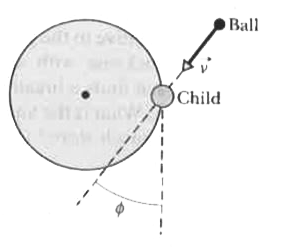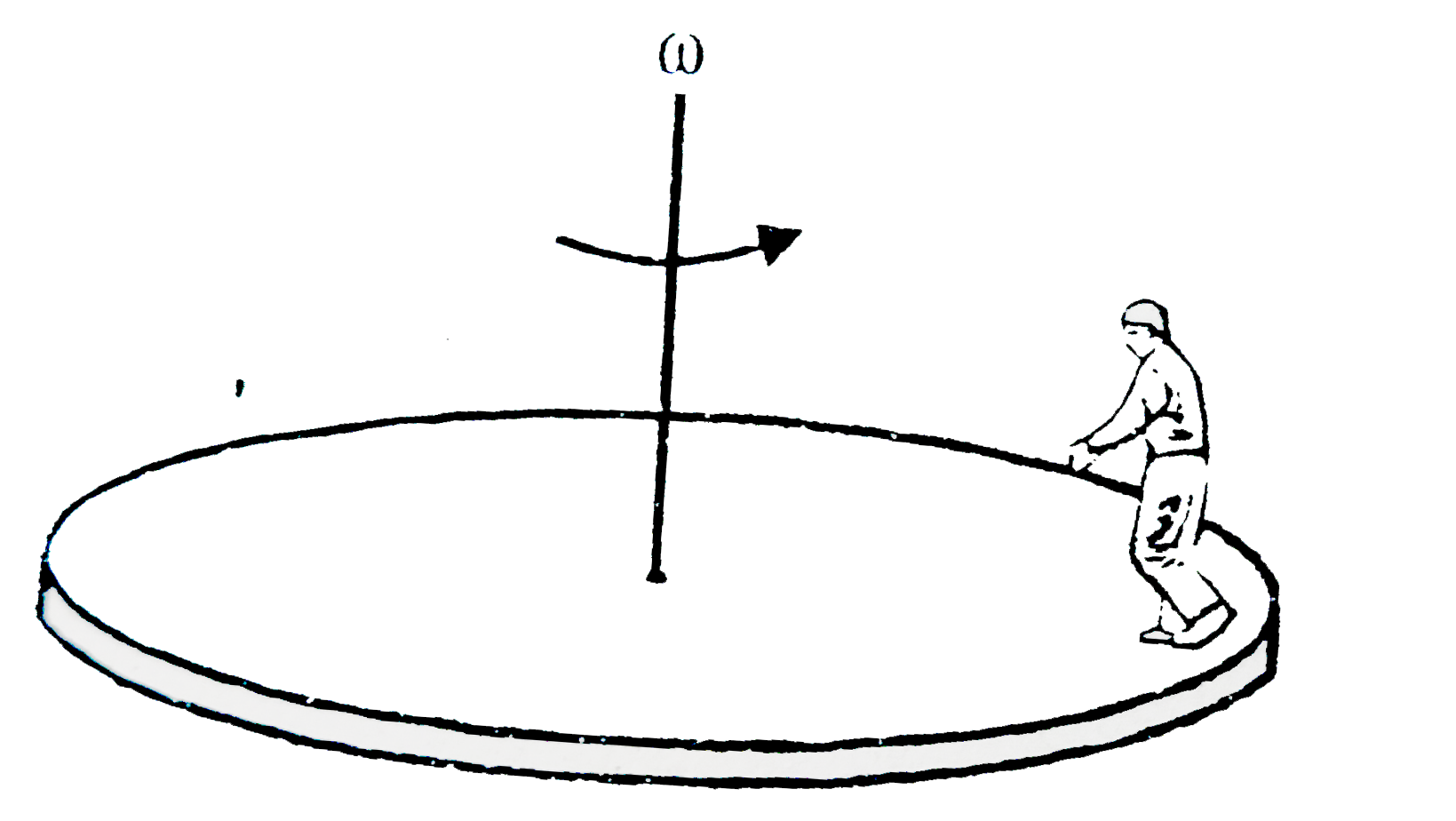In Fig. 10-86, a 30 kg child stands on the edge of a stationary merry-go-round of radius 2.0 m. The rotational inertia of the merry-go-round about its rotation axis is 150kg⋅m2. The child catches a ball of mass 1.0 kg thrown by a friend. Just before the ball is caught, it has a horizontal velocity →v of magnitude 12 m/s, at angle ϕ=37∘ with a line tangent to the outer edge of the merry-go-round, as shown. What is the angular speed of the merry-go-round just after the ball is caught?

0.070 rad/s
Topper's Solved these Questions
- RIGID BODY DYNAMICS - IBook:RESNICK AND HALLIDAYChapter:RIGID BODY DYNAMICS - IExercise:PRACTICE QUESTIONS (SINGLE CORRECT CHOICE TYPE)
Explore 43 Videos
- RIGID BODY DYNAMICS - IBook:RESNICK AND HALLIDAYChapter:RIGID BODY DYNAMICS - IExercise:PRACTICE QUESTIONS (MORE THAN ONE CORRECT CHOICE TYPE)
Explore 7 Videos
- RIGID BODY DYNAMICS - IBook:RESNICK AND HALLIDAYChapter:RIGID BODY DYNAMICS - IExercise:CHECKPOINT
Explore 18 Videos
- RELATIVITYBook:RESNICK AND HALLIDAYChapter:RELATIVITYExercise:PRACTICE QUESTIONS (Integer Type)
Explore 5 Videos
- RIGID BODY DYNAMICS-IIBook:RESNICK AND HALLIDAYChapter:RIGID BODY DYNAMICS-IIExercise:PRACTICE QUESTIONS (Integer Type)
Explore 2 Videos
Similar Questions
Knowledge Check
A merry -go-round - is moving at a non - varying speed of 10 m/s . It implies that
AIt is moving with uniform velocityBIt is moving with uniform accelerationCIt is moving with uniform speedDthe actual distance covered by swings with respect to each other is 10 metres .A boy is siting on a merry-go-round which is moving with a constant speed of 10 ms−1 . The means that the boy is :
Aat restBmoving with no accelerationCin accelerated motionDmoving with uniform velocityA merry-go-round is moving at anon-varying speed of 10 m/s. it implies that
Ait is moving with uniform velocityBit is moving with uniform accelerationCit is moving with uniform speedDthe actual distance covered by swings with respect to each other is 10 metres
the force experienced by a body in the merry go-round is
View SolutionA child is standing on the edge of a merry-go-round that has the shape of a disk, as shown in the figure. The mass of the child is 40 kg. The merry-go-round has a mass of 200kg and a radius of 2.5 m, and it is rotating with an angular velocity of ω=2.0 radians per second. The child then walks slowly towards the centre of the merry-go-round. What will be the final angular velocity of the merry-go-round when the child reaches the centre? (The size of the child can be neglected)

View SolutionA stone of mass 4kg is whirled in a horizontal circle of radius 1m and makes 2 rev/sec. The moment of inertia of the stone about the axis of rotation is
View SolutionA solid cylinder of mass 20 kg has length 1 m and radius 0.2 m. Then its moment of inertia (in kg m ) about its geometrical axis is (in kg m2)
View SolutionA solid cylinder of mass 20kg has length 1 m and radius 0.2 m. Then its moment of inertia (in kg-m2) about its geometrical axis is :
View Solution

